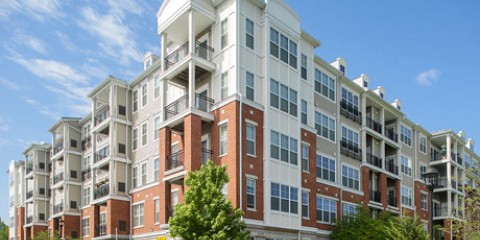Overview:
- New 12-story, 450,000 sq/ft mixed-use residential building
- Building consists of 34,000 sq/ft of retail space in the basement and first floor, 60,000 sq/ft of parking on the 2nd and 3rd floors for 150 cars, 19,000 sq/ft of common areas and amenity spaces such as a lobby, management offices, yoga, fitness, club room, lounge, and 310 residential units on the upper floors
- There is a rooftop patio and pool, ample outdoor areas with fireplaces, grilles, water features, and a dog run area with a dog wash room

R.W. Sullivan Engineering recently completed the design for a new 12-story, 450,000 sq/ft mixed-use residential building. Building consists of 34,000 sq/ft of retail space in the basement and first floor, 60,000 sq/ft of parking on the 2nd and 3rd floors for 150 cars, 19,000 sq/ft of common areas and amenity spaces such as a lobby, management offices, yoga, fitness, club room, lounge, and 310 residential units on the upper floors. There will be a rooftop patio and pool, ample outdoor areas with fireplaces, grilles, water features, and a dog run area with a dog wash room. The project was designed to be LEED certifiable and comply with the stretch energy code. Project completion date of 2014.
The building is conditioned with a water source heat pump (WSHP) system for cooling and heating, along with rooftop energy recovery ventilators (ERV’s) providing fresh air to the building. Significant energy savings are achieved by recovering energy from exhaust airflow streams which would otherwise be wasted to the atmosphere. High efficiency condensing gas boilers provide hot water to the WSHP loop. One advantage of using a WSHP loop allows the “sharing” of energy between all spaces in the building by transferring heat recovered from a warm area to a colder area. During non-peak summer and winter hours the system can run at very high efficiencies and potentially not require any external heat rejection or supply.
Variable frequency drives control large motors which allows them to operate at low speed during part-load conditions when highest efficiencies are attained. A diesel generator provides standby power in the event of an emergency or power failure, ensuring safe conditions for occupants and first responders. An energy management system was provided for the building.

